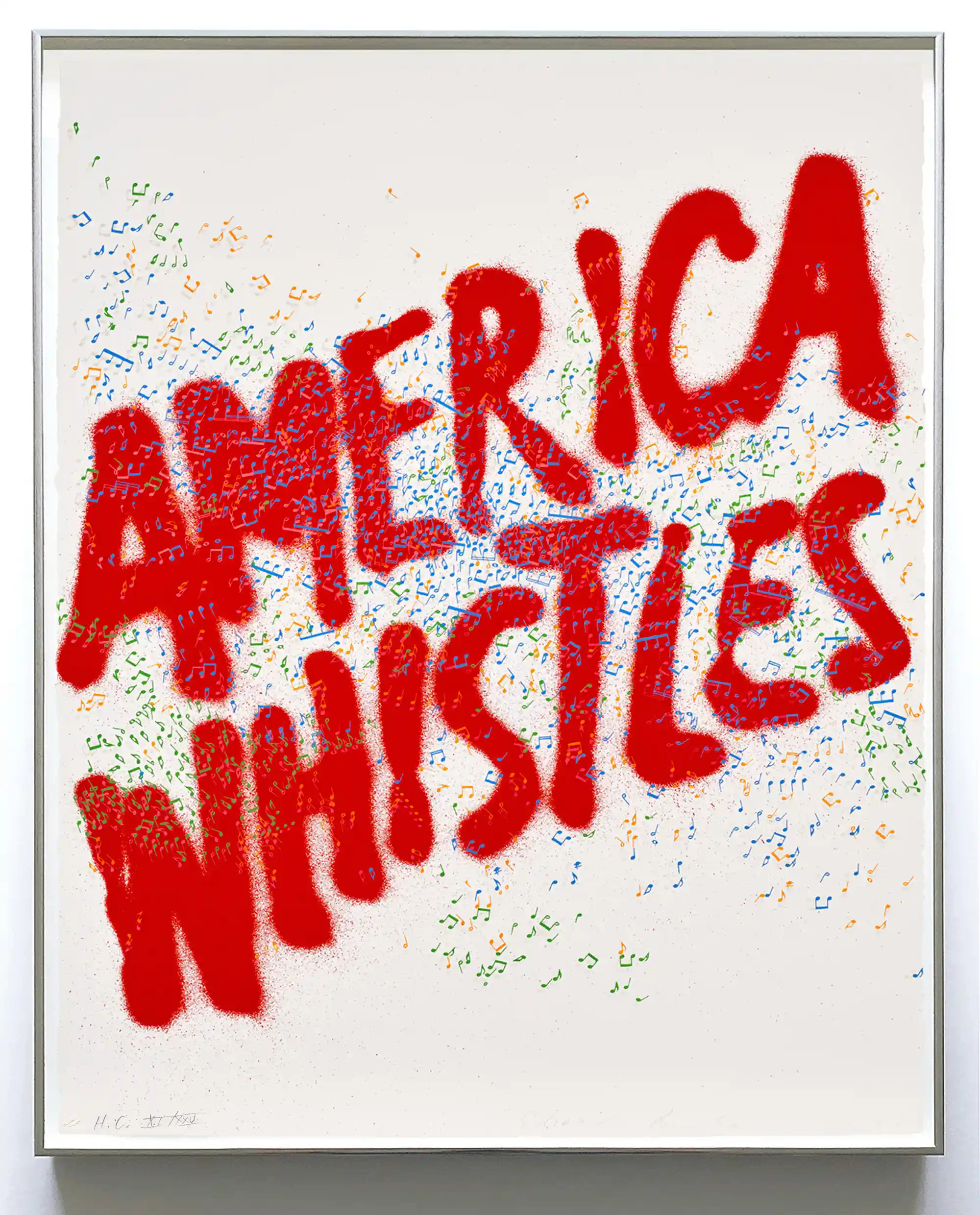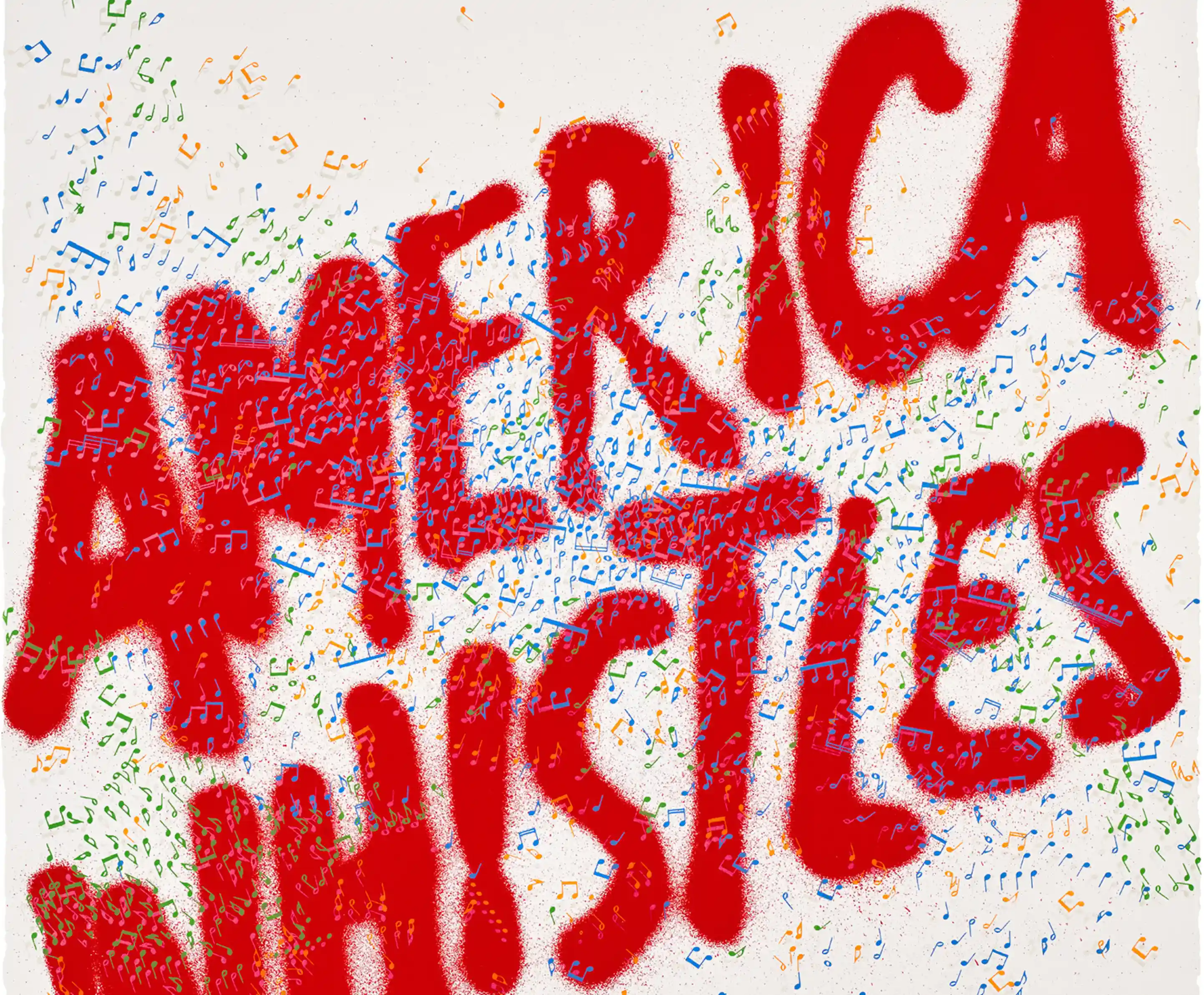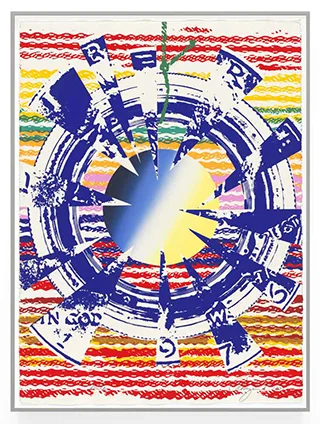Ed Ruscha
America Whistles (Siri Engberg 84), 1975
5 color lithograph on Arches paper
paper: 30 1/16 x 22 7/16 inches
frame: 31 1/2 x 24 inches
edition of 200 plus 25 AP's, 25 HC's
signed and dated "Edward Ruscha 1975" in pencil lower right
numbered in pencil lower left
workshop chop mark lower left
workshop number reverse lower right "197c-ER75"
printer Cirrus Editions, Los Angeles
published by APC Editions, division of Chermayeff & Geismar Associates, Inc., New York (and underwritten by Mobil Oil Corporation)
Floated in a metal frame with UV plexiglass
Literature
Edward Ruscha: Editions 1959-1999. Catalogue Raisonne, Siri and Clive Phillpot Engberg, Walker Art Center, 1999, no. 84, another impression reproduced in color, pg 23.
Museum Collections
Museum of Modern Art, New York
Smithsonian American Art Museum, Washington D.C.
National Gallery of Art, Washington D.C.
Irish Museum of Modern Art, Dublin
paper: 30 1/16 x 22 7/16 inches
frame: 31 1/2 x 24 inches
edition of 200 plus 25 AP's, 25 HC's
signed and dated "Edward Ruscha 1975" in pencil lower right
numbered in pencil lower left
workshop chop mark lower left
workshop number reverse lower right "197c-ER75"
printer Cirrus Editions, Los Angeles
published by APC Editions, division of Chermayeff & Geismar Associates, Inc., New York (and underwritten by Mobil Oil Corporation)
Floated in a metal frame with UV plexiglass
Literature
Edward Ruscha: Editions 1959-1999. Catalogue Raisonne, Siri and Clive Phillpot Engberg, Walker Art Center, 1999, no. 84, another impression reproduced in color, pg 23.
Museum Collections
Museum of Modern Art, New York
Smithsonian American Art Museum, Washington D.C.
National Gallery of Art, Washington D.C.
Irish Museum of Modern Art, Dublin









